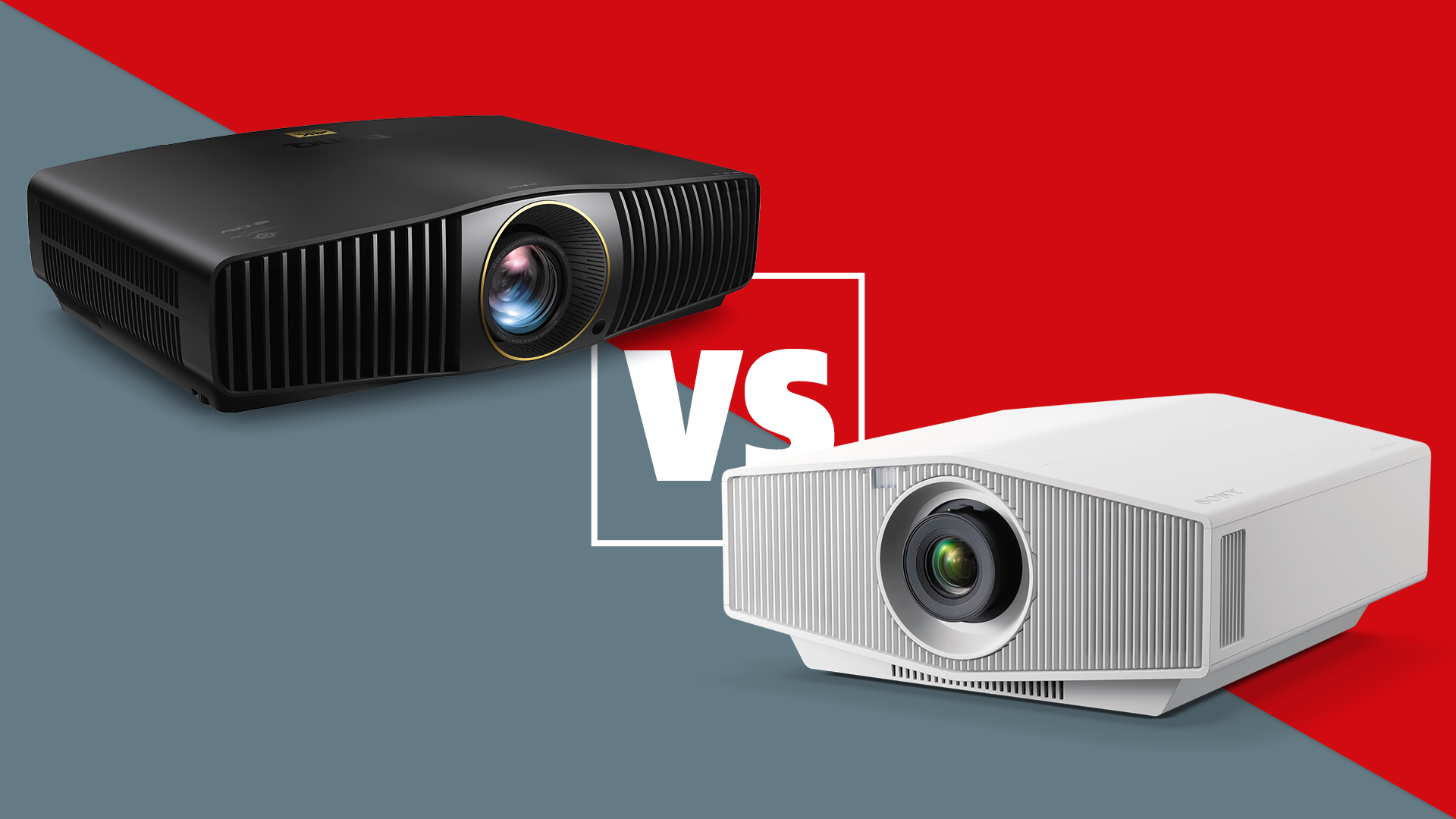What Hi-Fi? Verdict
A strong option on paper, the LG 65SM9800PLA has glaring flaws that make it impossible to recommend
Pros
- +
Bright and punchy
- +
Good OS with lots of apps
- +
Strong sound
Cons
- -
Awful backlight blooming
- -
Poor viewing angles
- -
Exaggerated colours and edges
Why you can trust What Hi-Fi?
The LG name has become synonymous with OLED to such an extent that it’s easy to forget the company makes other products – even non-OLED TVs such as the 65SM9800PLA here.
This is, in fact, LG’s top non-OLED television. A 65in LCD model with a direct LED backlight for better contrast and so called ‘NanoCell’ technology for better colours. It all sounds impressive, yet, in action, the most striking thing about the 65SM9800PLA is how poor it is.
Features
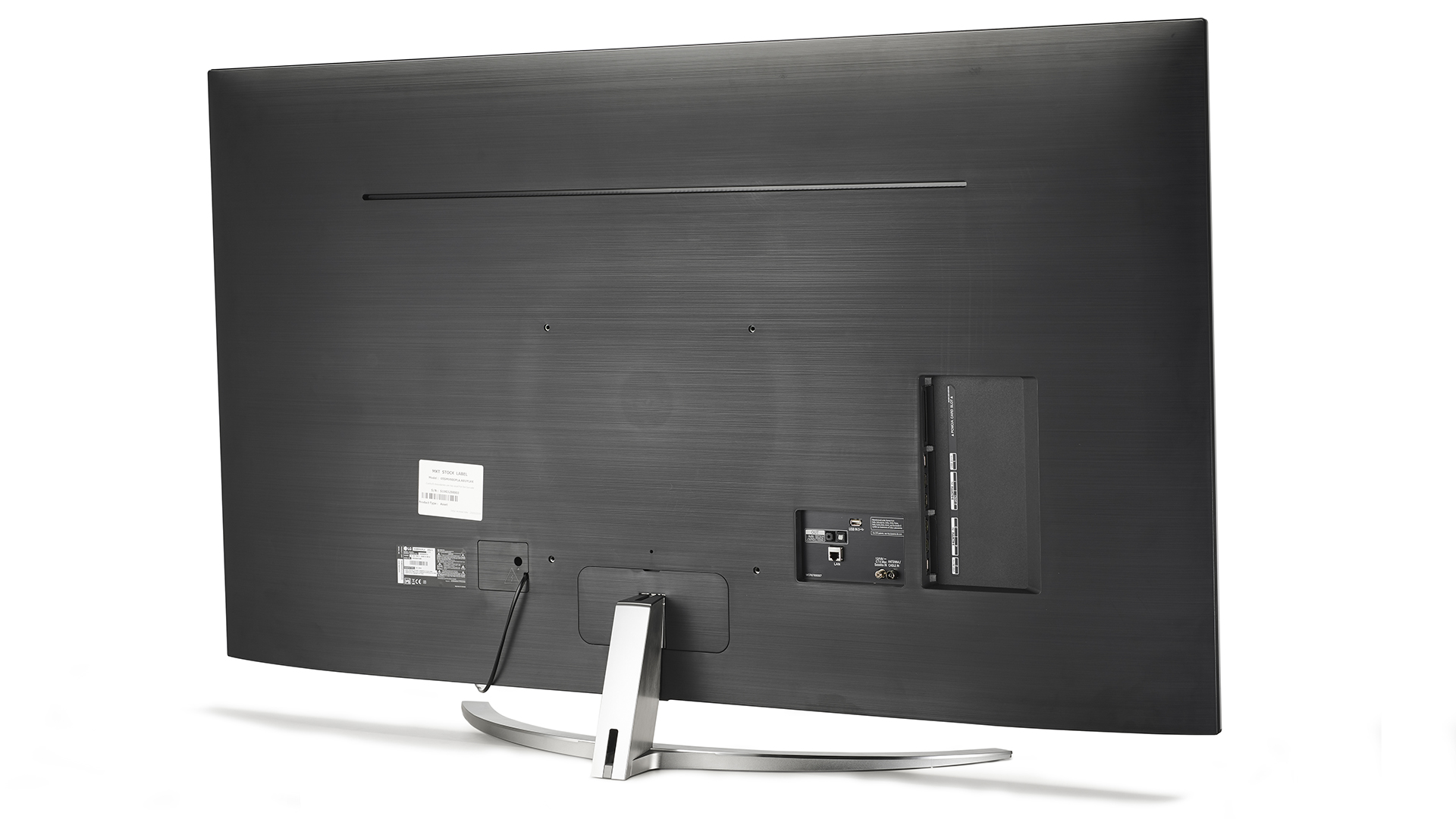
From a distance, the ‘SM9800 is a smart-looking TV with relatively thin bezels and a reasonably elegant boomerang-shaped stand. Without the stand, the TV measures 6.4cm at its thickest point – hardly super-thin but pretty standard for a mid-range LCD TV with a direct LED backlight.
The connections are to the left of the TV screen, with most (four HDMIs and two USBs) facing sideways but some (aerial, satellite, ethernet, optical and a third USB) facing backwards and therefore being a bit fiddly to access if you wall-mount the TV.
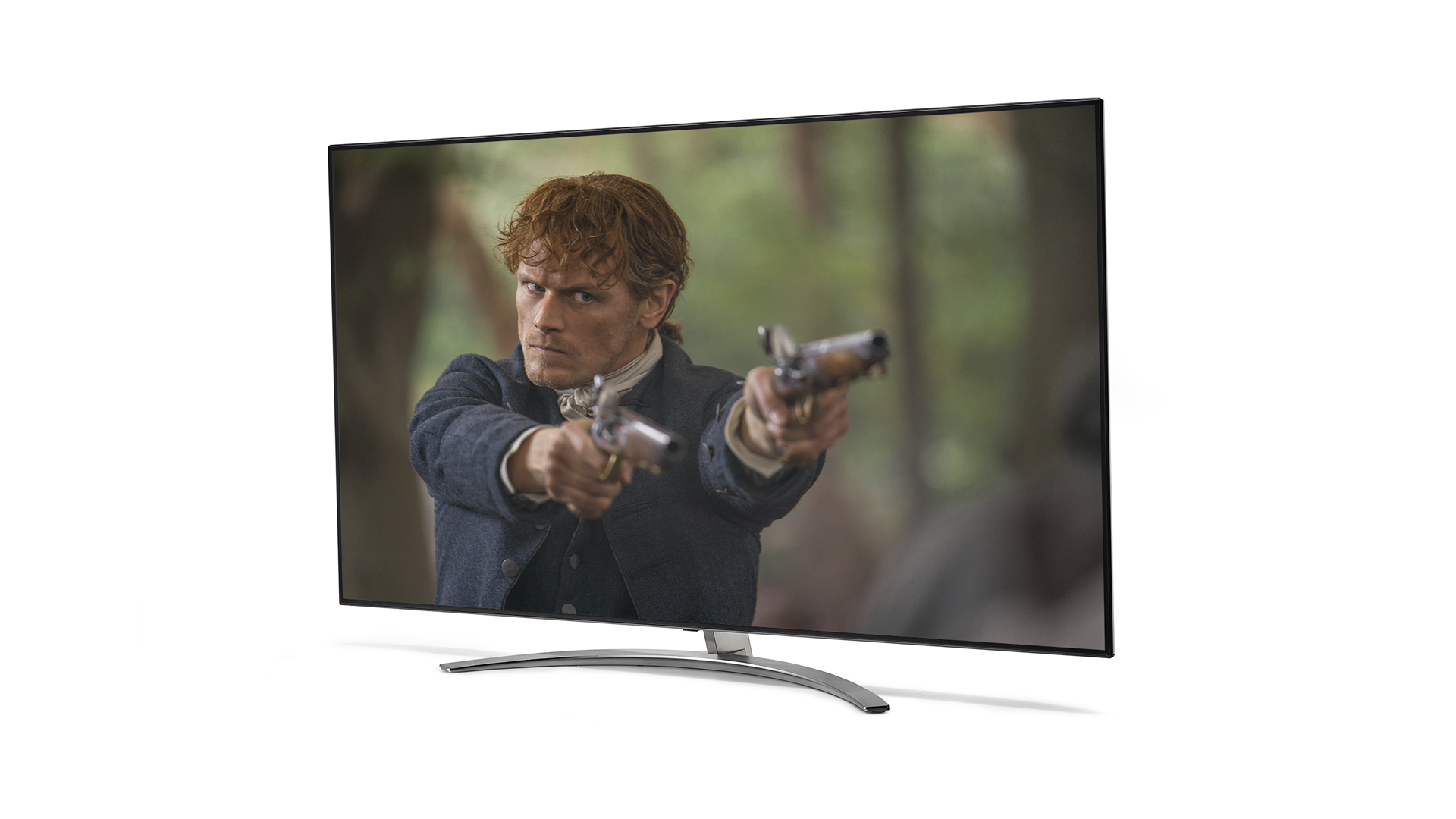
Screen type LCD with LED backlight
Resolution 4K
Operating system webOS
HDR formats HDR10, Dolby Vision, HLG
HDMI 4
USB 3
Optical 1
Fully certified HDMI 2.1 sockets are rare at this price, so their presence here is a bonus. It’s unlikely you’ll take advantage of all of the features, but eARC (Enhanced Audio Return Channel) is useful in that it allows you to send Dolby Atmos to a compatible soundbar or home cinema system. VRR (Variable Refresh Rate), meanwhile, will appeal to hardcore gamers looking for a smoother experience.
Away from the physical connections, there are plenty of ways to watch things on the SM9800PLA, thanks to it having the same webOS platform as its OLED siblings in LG’s 2019 TV range. This isn’t the nicest or most app-laden TV operating system around – that accolade belongs to Samsung – but some will love the combination of big, colourful icons and the pointer-like Magic Remote. Certainly, this is a user experience unlike that offered by any of LG’s rivals.
The app selection includes all of the obvious big-hitters, such as Netflix (with Dolby Vision), Amazon Prime Instant Video (HDR10 only, for some reason), BBC iPlayer, ITV Hub, All 4 and My5; as well as a few others, such as Google Play Movies & TV (in 4K and HDR) and Now TV. The one big omission on the app front is Apple TV, but LG has announced that this will be coming to TVs such as this via a software update.
The latest hi-fi, home cinema and tech news, reviews, buying advice and deals, direct to your inbox.
It almost goes without saying that this is a 4K set. HDR, meanwhile, is supported in HDR10 and Dolby Vision formats, as well as Advanced HDR by Technicolor. HDR10+ is not supported, but that’s no great loss, at least for the time being.
The heart of the TV is the second-generation version of the a7 processor. This is the same CPU as is found in LG’s most affordable OLED model, the B9, and it features, among other things, an AI algorithm that’s designed to optimise picture and sound on the fly.
Picture

LG makes big claims for its NanoCell technology, particularly regarding colour reproduction and viewing angles. It’s surprising, then, that these turn out to be two of the worst aspects of the SM9800’s performance.
We begin with the 4K Blu-ray of Captain Marvel and initially enjoy the vibrancy of the performance, which brings to life the neon lights of futuristic city Hala. Continued viewing, though, proves the colours to be decidedly exaggerated overall. It’s a warm and rich delivery that, while not entirely unpleasant, is obviously incorrect, and no amount of tweaking fixes the issue. It's a huge problem - the vibrancy of the picture is often quite likeable - but if authenticity is the goal, this TV clearly falls short.
The viewing angles, though, are dreadful. Move just a little off axis and black depth and colour vibrancy instantly deteriorate to leave everything grey and hazy. If you’re not in the sweet spot, you’re going to get a poor performance.
And even sitting right in the sweet spot, you won’t be able to ignore the SM9800’s other big flaw: backlight blooming. Every bright object has a patch of light around it that extends a few inches. It would be bad for a cheap, edge-lit TV, let alone a premium model with a direct LED backlight such as this. Hands-down, this is the worst blooming we’ve seen on any TV for a long while, and it’s impossible to ignore.
There is also a general lack of black depth that genuinely ruins some dark scenes (a view of an aurora over some mountains at night in The Revenant looks washed out to incomprehension) but also means that brighter scenes lack the dramatic contrast they require (views through the forest, for example, that should contrast the bright light in the distance with the dark trunks in the foreground).
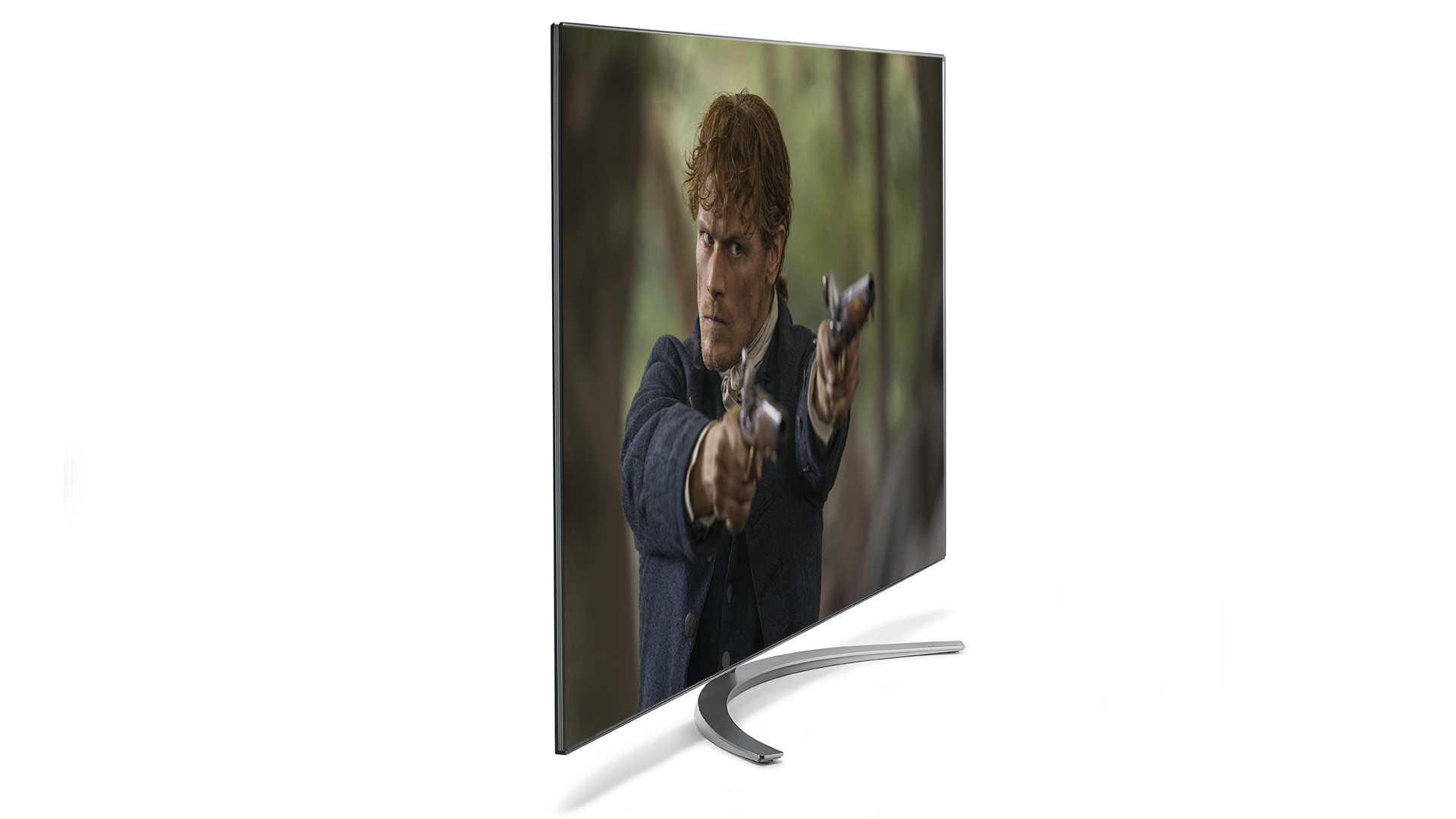
Also on our list of picture gripes is the TV’s approach to sharpness. Out of the box it has a tendency to over-sharpen and exaggerate edges in a way that looks impressive at first but decidedly unnatural over time. Turning off the Super Resolution feature and reducing Sharpness fixes this, but also results in a soft picture. Unfortunately, there doesn’t appear to be a middle ground.
After all of these complaints, what’s left to be positive about? Motion is reasonable, as long as you avoid the over-processing of the default settings, and this is certainly a bright and punchy performance – much more so than that offered by rivals such as the Samsung QE65Q70R, for example. In bright, colourful scenes, such as those that take place on Ego’s planet in Guardians Of The Galaxy Vol.2, the SM9800 can be dazzling. Even then, though, the brightest parts of the picture can be over-exposed and lacking detail.
The SM9800’s issues are exaggerated when watching HDR content, and SDR is far more palatable. Playing the standard Blu-ray of Logan, the issues are all still there, but are far less in your face. At times, and assuming you’re sitting straight-on to the set, the viewing experience is perfectly pleasant.
Standard-def broadcasts, whether delivered via the Freeview or Freesat tuners, are decent, too, with the on-board upscaler producing clean and clear images. Colours are a touch overblown again, but not to an extent that looks hugely incorrect.
Sound
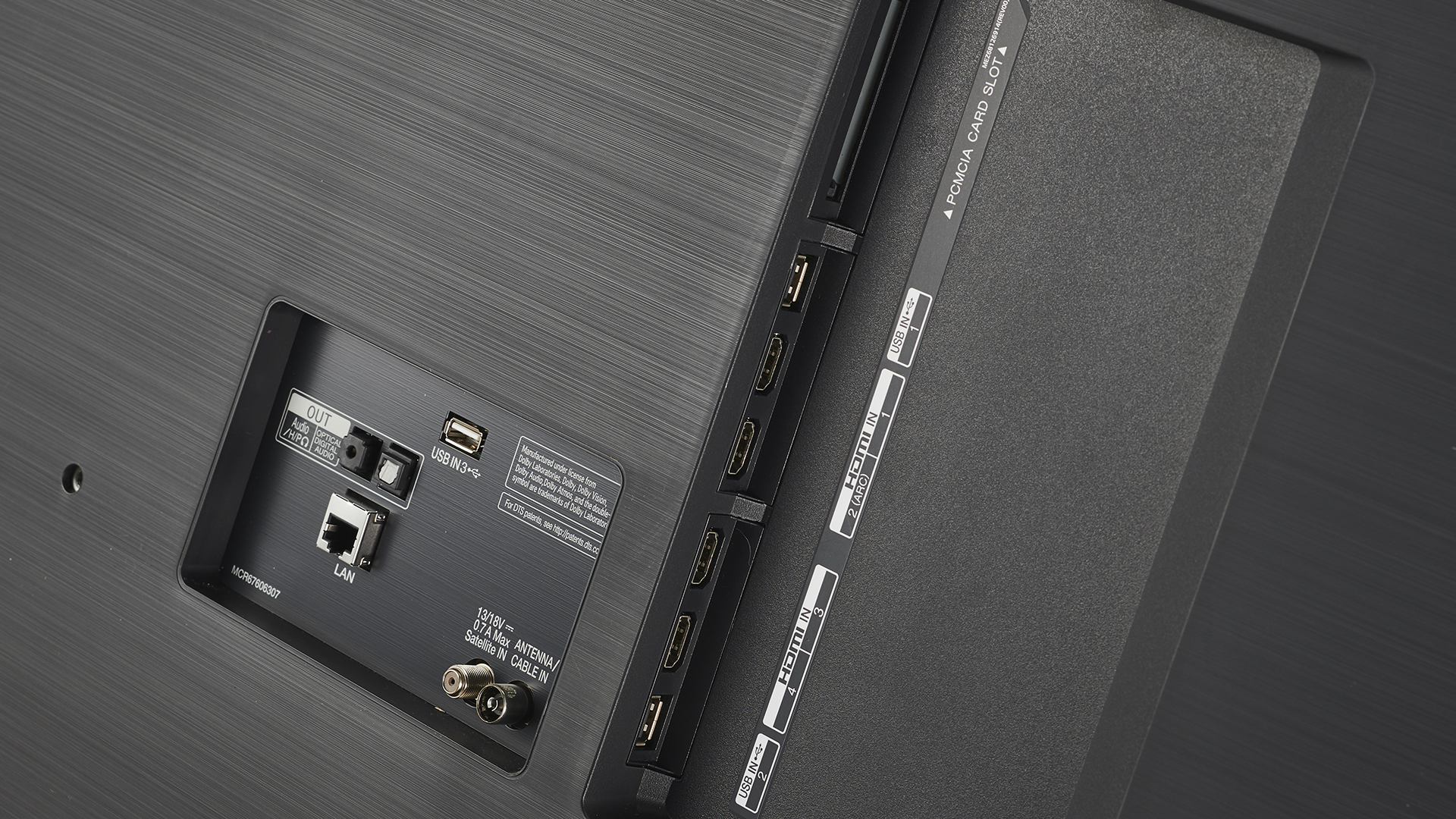
The SM9800’s audio is thankfully much better than its video, with the 40W, 2.2ch sound system proving direct, dynamic and detailed. There’s good, natural-sounding bass weight, too – still relatively rare from flatscreen TVs, particularly those in the price range in which this LG now finds itself.
The Dolby Atmos mode is worth experimenting with. It sacrifices a little of the TV’s crispness and punch, but it adds just a bit of width and a reasonable amount of height. While it doesn’t suit everything you watch, it works well with a lot of larger scale movies.
We’d avoid the AI Sound mode, though. It’s designed to tailor the sound to your room, but during testing sacrificed width and weight to a disappointing degree.
Of course, while the 65SM9800PLA sounds good for a TV of its price, it can still be beaten by a relatively inexpensive soundbar.
Verdict
The 65SM9800PLA is the worst kind of surprise. We’re so used to LG TVs being fantastic that the idea of one being unrecommendable seems ridiculous. And yet, here we are.
Astonishingly, until very recently the 65SM9800PLA would have set you back £1799 - more than the B9 OLED. Even at this vastly reduced price, this TV has such glaring flaws that a two-star verdict is the best it can get.
No other TV we’ve reviewed over the last year has had worse blooming or viewing angles, and it's below par in a number of other aspects, too. While it does go bright and is surprisingly sonically capable, that isn't nearly enough to make up for those issues.
SCORES
- Picture 2
- Sound 4
- Features 5
MORE:
Read our Samsung QE65Q70R review
What Hi-Fi?, founded in 1976, is the world's leading independent guide to buying and owning hi-fi and home entertainment products. Our comprehensive tests help you buy the very best for your money, with our advice sections giving you step-by-step information on how to get even more from your music and movies. Everything is tested by our dedicated team of in-house reviewers in our custom-built test rooms in London, Reading and Bath. Our coveted five-star rating and Awards are recognised all over the world as the ultimate seal of approval, so you can buy with absolute confidence.

